......to the following TWO GLOBAL USURPERS & disasters
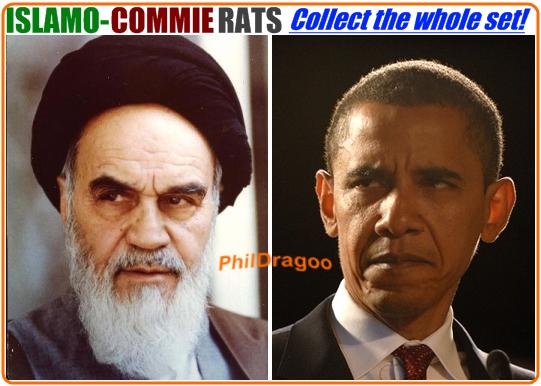 div>
div>
(some of the information being posted was written by me but also posted in the past on other locations with an introduction like the one here, so readers should realize why there may be a third person reference to me)
To understand the truth about the late Shah and what really happened in Iran in 1979, one must read this article and others by Alan Peters, An expert on security and intelligence matters in Iran. ================================= Mohammad Reza Pahlavi (1919-1980)
A retrospective on his reign on the occasion of the twenty-fifth anniversary of his death.
"They revere you in fortune and trample you in defeat" (Moliere)
Some 25-years ago in summer, Mohammad Reza Pahlavi the Shah of Iran was dying in Cairo. Egypt's President Sadat had offered him his last refuge and helped him escape from a perilous exile in Panama.
Historically, Egypt has been famous for providing shelter - even to those they do not approve - like the family of Yasser Arafart - at the time that Arafat was public enemy #1 in Egypt for inciting the overthrow of Sadat's regime. His wife and children were guarded by Sadat's government bodyguards.
In the case of the Shah, Sadat liked him and the Shah's marriage to former Egyptian King Farouk's sister made him "family", too.
In Panama, the fate of the ailing monarch had hung in the balance for several weeks as shadowy contacts between Panama's strongman, General Torrijos, and emissaries from the Islamic revolution increasingly pointed to a swap deal - the extradition of the Shah against the release the 52 American Embassy hostages in Tehran.
While the Shah's hand-over to Khomeini was seriously contemplated by President Carter, his administration had been drawn into an eerie gambit in Panama of which the hostage end-game was unknown. The Shah's succumbing to cancer on July 27th, 1980 must have brought a sigh of relief in Washington as indeed in many other capitals burdened by the past courtship for refuge of the Iranian monarch, many of whom had previously benefitted from his largesses.
Two decades and many sorry events later, some of the intricacies of the Shah's personality and rule still beg scholarly probe.
The majority of Iran's current population has been born after the Shah's demise. His image in their mind, as indeed in the minds of many casual observers abroad, has been shaped through unrelenting distortions of historical facts by Carter and an obliging liberal Media, intent on justifying Carter's decision to remove the Shah.
The younger Iranians deserve an unbiased account of these 37 years in its baffling turns and twists and contradictions. Including that when he left Iran for the last time, the Shah also left behind some $3 Billion of the Pahlavi Foundation funds over which he had total control and relied on some $90 million of his own money, accumulated over many decades, through investments in Europe, one of which was a jewelry business in Switzerland.
To be sure, a distilled account of these years would not completely vindicate the Shah. His handling of the constitution was self-defeating in ways that escaped his political savvy. Yet, at its worst, was still aimed to benefit the country not himself.
He had all the prestige he needed and required no constitutional short cuts to stroke his ego.
His authoritarian rule, much of it because he could not find "managers" to help run the country honestly and efficiently, carried the seeds of instability and a backward thrust, the prevention of which had served as an alibi to silence dissent.
Yet, the surfeit of slander and libel before and after his downfall was largely undeserving.
Few leaders in history have been adulated and demonized in such a frivolous manner. A good illustration of hypes comes from two prominent Americans.
On the New Year's Eve of 1978 -- a few short days before the triggering event of the Islamic revolution -- President Carter stunned the US western allies by calling the Shah his most trusted ally and dialogue partner.
Carter's effusive flattery - describing Iran as island of stability - was in opposing symmetry to another hyperbole by Senator Edward Kennedy, who some two years later, at the height of the American Embassy hostage crisis, castigated the Shah for having run "one of the most violent regimes in history of mankind".
Kennedy continues, even today, in his baseless attacks on anything and everything, including his own government and citizens.
Both remarks were clearly calculated to achieve short-term objectives. Carter came to Teheran, desperate to check the soaring price of the crude oil.
Kennedy's remark was timed to optimize the chances of his emissary to Tehran, tasked to obtain from Ayatollah Khomeini a token release of the American hostages.
Kennedy, then seeking to snatch the Democratic presidential nomination from the incumbent Carter, had chosen the former US Senator James Abourezk (of Arab extraction) for this unpublicized mission to Tehran.
Where should the line be drawn?
In a mixed bag of achievements and flaws the Shah's balance sheet resembles other modernizing states. Many would grade it superior.
What tarnished his image most was his alleged record on human rights and political freedoms, much of which proved in the aftermath to be highly exaggerated.
Detractors state "a silence of a cemetery" to characterize the political arena in Iran during most of the Shah's rule. The ubiquitous security agency SAVAK, created in 1957 with the help of the US through General Teymour Bakhtiar, later a sworn enemy of the Shah, was the instrument of the repression of mostly Communist attacks on the monarchy triggered by the Soviets.
By the seventies, the suppression had spawned violence as groups, sprung from the very edges of the ideological spectrum, resorted to urban guerrilla tactics and acts of terrorism. A vicious circle set in.
General Bakhtiar, domiciled in Iraq, was instrumental in sending waves of terrorists into Iran. Terrorists willing to shoot to kill. For the first time traffic police, who usually had empty holsters or unloaded guns at their waist were issued side arms and bullets.
The terrorists robbed banks to fund their operations and for the first time in Iranian history, the robbers shot innocent clerks to make a point.
Then SAVAK blended ruthlessness with incompetence.
It had been effective in dismantling the clandestine structure of Iran's Communist party (Tudeh) but failed to gauge the creeping popular discontent, fanned by Marxist groups like the Mojahedin and Fedayeen, still less the coming of the fundamentalist Islamic bane that surprised the Soviets and snatched away their Marxist revolution to place it in clerical hands.
When the crunch finally came in 1978, this "colossus" of only a scant 4,000 employees nationwide fell on its clay feet unable to save its master.
A dozen Soviet urban guerilla psychologists, operating from inside the Soviet Embassy in Tehran and calling the shots for anti-Shah operations overwhelmed Iranian intelligence and police autorities, who had no training in how to handle or oppose these attacks.
For instance, they had their Marxist minions knock on people's doors begging for Mercurochrome (a red antiseptic liquid common in Iran) and cotton wool. Ostensibly needed to treat wounded innocents shot by the Shah's forces in such huge numbers that pharmacies no longer had enough of stocks to provide them to these volunteers.
The red Mercurochrome was in fact used to stain the streets and clandestine flyers would then claimed the Shah's men had shot innocents and hurriedly removed their bodies.
As proof they used another gambit. They collected old shoes - men's, women's, children's of both sexes and threw one shoe of each pair by the hundreds on top of the stains.
The flyers would then invite people to witness the amount of deaths by those single shoes that had fallen off the bodies as the Shah's forces allegedly hurriedly removed the victims and left the shoes behind.
The extent of repression was never close to claims recklessly advanced in some quarters, including by such reputable institutions as Amnesty International, which finally concluded in late 1978 that there were less than 2,400 political prisoners in the Shah's jails.
Only this number despite the wide spread Soviet efforts to install their minions and find passage to warm waters providing thousands of candidates. Despite the Bakhtiar terrorists sent in their hundreds, despite the Marxist and Fedayeen in their thousands openly attacking the regime.
And the Hezbollah-to-be, pro-Khomeini adherents who disregarded laws and invited being arrested on a daily basis.
No mass graves trailed the Shah when he finally quit the country in January, 1979. No "death caravans" haunted his memory.
Tehran produced no equivalent of Buenos Aires's "Plaza de Mayo" where "grandmas" gather every Sunday to reclaim news of their missing children. To be sure the military courts were quick to mete out death sentences. But the practice of royal pardon was abundantly resorted to. The sentences were systematically commuted or annulled.
Some viewed this practice as a gimmick to earn political capital but be it as it may, few now dispute the fact that the Shah was averse to cruelty or execution. He even stayed Khomeini's execution in 1964 at the behest of General Pakravan, head of SAVAK.
In hindsight, this was the gravest, catastrophic mistake possible, which not only later cost Pakravan his life but also Iran's progress into a modern nation instead of a deep well of suffering and pain it is today.
The overall number of executions by the military tribunals, including those occasioned by drug related offenses, after drug smuggling and distribution became a capital offense, were estimated at around 350 cases in a 25-year period.
The USA has more than this and Iran currently has close to 500 a year, including teen-agers of both genders, which contravenes all laws and even Iran's own.
Figured among them were a few prisoners of conscience including some twenty-five ring-leaders of the military wing of the Communist party of Iran. Their crime, leading to execution, was to have been mesmerized by Stalinist Russia.
The rest of the six hundred communist officers arrested in the nineteen fifties - as indeed the bulk of other political prisoners - were rehabilitated, many were co-opted into the Shah's administration.
One of his favorite gambits was to invite and appoint dissident leaders into senior government positions and then ask them to do the job better than the person they replaced.
Then chortled when they eventually admitted they were unable to because the system and co-workers were too cumbersome and their staff often sabotaged work or were incompetent and admitted they now understood why their predecessors failed to succeed.
Having experienced the challenges first hand, they usually ended up becoming strong supporters of the Monarch in his efforts to change and modernize the nation.
All in all some 3500 persons were reportedly killed in street unrests or by order of military courts during the Shah's reign, between 1953 to 1979 though little substantiation exists for such a number.
In one famous incident of Jaleh Square, where claims of 5,000 deaths were made, secret martial law figures later showed only eight had died from bouncing bullets fired into the air to control the crowd and another 30 had been wounded the same way.
The square was also not big enough to hold 5,000 people making such a claim even less possible. Over a thousand "unmatching" shoes were found in the square the morning after!
The Geneva based International Committee of Red Cross which visited all Iranian prisons in 1977 in an anti-Shah mission inspired by Carter and his allies, put the number of political prisoners at 3200 while some seventy prisoners were declared unaccounted for.
American liberal democrats, as was the intention, could pretend to be horrified by these figures, moderate though they are in relative terms and could use them to justify the removal of the Shah.
This having been said, there is another facet of human rights in the Pahlavi era which has largely been disregarded in the rush to condemn.
In an average middle class neighborhood in Tehran of the nineteen fifties, for example, a small alley had taken its name after a Jewish doctor, who had been the first to construct a house in that vicinity.
The alley eventually housed an Assyrian Christian family, several Baha'i families, a Zoroastrian family and of course many Moslem households.
No hint of bigotry disturbed the serenity of this cultural mosaic. Tolerance or lack of it was a personal matter not a government imposition and for the most part if you lived your life to the fullest but avoided anti-government activity, nobody bothered you.
It would be hypocritical to claim that religious minorities were by law on the same footing as Moslems uner the Shah, but intolerance was being discouraged and the system moved progressively towards full equality of rights among citizens.
There were differences: minority members could not rise above the rank of Brigadier-General in the military. On the other hand, each ethnic minority had representation in the Majliss (Parliament) and Senate proportionate to their numbers in the overall population.
A previously unknown historical anecdote, cited by an US scholar in a recent book, best illustrates the point. It concerns the protection of the Iranian Jews living in the occupied Europe during World War II.
Under Reza Shah, the founder of the Pahlavi dynasty, according to the author, the Iranian Government of the time, managed to procure them safe conduct from the authorities of the Third Reich on the false pretence that these citizens, having lived in Iran for over two millennium, had been assimilated in the Persian (Aryan) race. s
The status of women is another case in point.
Under the Pahlavis Iranian women were brought to the society's mainstream. The mushrooming institutions of higher learning opened their doors to women. Teachers, doctors, lawyers and administrators were trained and fielded in different walks of life, to the very highest levels such as Minister of Education, Member of Parliament and so on.
The right to vote, to seek divorce and be protected from an abusive husband was - to the dismay of the clerics - written into the law - weakening their supersititious and religious hold on the general populace. And creating resentment among them toward the Monarchy.
Today, the Iranian women remain one of the vanguards of resistance to scourges of the fundamentalist Mullah rule.
(Alan note: the stream of visits from inside islamic iran to read my article, posted last year, titled "women arise" speaks volumes)
The Bazaar merchants also resented their monopolistic control of imports and exports and general business being extracted from their little bazaar booths, which represented billions of dollars never put back into circulation for the improvement of the economy.
The Shah moved much of this into modern, multinational organizations in uptown Tehran, so the miffed merchants funded the clerics and encouraged them to foment trouble and use religion to attack the monarchy.
Much of the bravura exhibited by the Shah's administration in the seventies, was in the sphere of economy. The exuberance of the double-digit growth was indeed intoxicating.
In 1974 - in the wake of a quantum jump in the oil price -- the Shah dismissed the counsel of prudence by experts and decreed an even faster growth. In his complex psyche, many imperatives drove him to go full blast.
One factor was to firm up the throne for Crown Prince Reza but he was equally concerned with his legacy and place in history - should he not disprove those detractors who claimed he did not measure up to the towering figure of his father.
Reza Shah the Great, to use his full title, was a stern disciplinarian with a strong will to unify the country and willing to use force to bring Iran's tribal chieftains under Central Government control. A hard act to follow for his diplomat rather than warrior son.
But the economic bullishness did not pay off in the face of the sabotage by the bazaar.
The country's weak infrastructure buckled under the weight of imports and the rise in the price of oil resulted in lower consumer demand in world markets.
As the economy wobbled and Carter's human rights agenda aimed like a javelin at the Shah, forced him to make liberalizing gestures, the tide began to change and turn against the monarch.
Iranians respect power and strength. The moment he showed a "co-operative" attitude, they turned on him, egged on by both the funds from the bazaar and the hostile clerics, whose influence had been diminished over time to almost nothing among a much more modern populace with open ties available to Western life styles and mind sets.
All these were unexpected perks for the disgruntled clerics. The magnetizing effect of the boom had already drawn rural masses to major cities glutting the congregations in mosques. Now the clerics reaped the harvest of fanned discontent, brandishing radical Shiite doctrine both as a challenge and a remedy.
The Shah's "politics of liberalization" had also created its own sliding spiral.
To reverse these trends, the Shah should have - but failed - to rally secular political forces to his side.
With the hindsight, it is also fair to say that the rigidity of some of the secular National Front leaders, who could have showed support and not eventually been destroyed themselves by the clerics, was an error of historical scale on their part.
Marxist and libertarian influences also made them into a philosphical, snobbish elite, which could not see the pitfalls of their mindsets relative to increasingly literate but basically uneducated and poitically inexperienced Iranian populace.
To what extent the Shah's judgment had been impaired by the secret diagnosis of lymphatic cancer in 1974 has not been established. Such a link is hard to quantify, all the more so that the Shah had apparently not been told of the exact nature of his illness, until the final years.
Be it as it may, his most serious errors occurred during the ensuing period.
It was at this time that the Shah decided on one politial party rule to prevent the bickering that had ensued in the two party system of Iran Novin and Mardom and to allow very capable men in the minority Mardom party to accept important positions to carry the nation forward.
Thus, he decreed that the Rastakhiz party would have two "wings" to cover the differing views of the elected parliamenterians.
He replaced the Islamic calendar with an ostentatious imperial calendar in a historical acknowledgement - not of his reign - but that of some 5,000 years of Monarchy in Iran. Anti-Monarchy groups, using any excuse, immediately attacked this as personal grandure.
The Shah had also begun his somewhat fanciful flights on the "Great Civilization." The new royal mindset had the Iranians believe that within a generation or so Iran would rank among the world's industrial elite.
Had he been given more time, his investments in key industries in the West, like Krupp steel and internal develoment of essential items like cement plants, nuclear power, etc., could well have made his vision come true.
With all the various pieces inside his almost photographic memory he was looking beyond the horizon.
Had a race against the clock already begun for the Shah?
A wild-west climate of profiteering marked these balmy years. Abusive business practices, including by some of the Shah's close family and friends, became a hallmark of the laissez-faire policies practiced on an overkill scale.
Partly because policing or regulating everything in a rapid growth arena with too few people to help him, became too much to handle.
Remember, a country resembles a major corporation and needs competent managers, directors, vice-presidents, senior vice-presidents and staff to run profitably and efficiently. Iran's growth far outstripped the availability of persons who could accept responsiblity with any degree of competence - or sadly - with honesty and not line their own pockets.
The Shah himself could hardly be given a clean bill of health as he brooked corruption in his entourage, yet he was far from the rapacious persona, with a fabulous wealth, which the revolutionary puffery sought to depict.
In fact he was a pragmatist. When complaints reached him that his Minister of Interior had misappropriated some $40 million and should be sacked and thrown in jail, the Shah refused.
He explained that the man had been Minister of Interior for some ten years or so, knew his job well and if he were fired, would spend a few years in prison and then be free to go to Europe and enjoy his plunder.
Instead, the Shah stated, the culprit would be at his desk every morning at six a.m., knowing that I know everything - and if from nothing else but guilt will do his job for the country better than before.
Which would be preferable to releasing him to go play in Europe with his stolen money, that would probably no longer be retrievable.
During the Embassy hostage crisis, the revolutionary authorities kept no stone unturned to find documentary evidence of financial wrong doings by the Shah. This search was aimed, inter-alia, to substantiate claims in the extradition brief submitted to Panama.
In March 1980, foreign correspondents scrambled for scoops in the jammed conference hall of the Tehran's Central Bank, where President Bani Sadr was to make the Islamic Republic's legal case against the Shah. Scathing revelations were expected. Yet nothing worth the print could be wired back to editors.
The revolutionary authorities had not been able to pin the Shah to any financial irregularity. This was not, however, the case in respect of some of the Shah's close family members.
Interesting to note, however, is that within six months of taking power, the Mullahs had rapaciously transfered funds to private overseas accounts they created for themselves, which exceeded by about ten times the total amount of what the 1,000 elite families of Iran had placed overseas during the last 25-years of the Shah's reign.
Most of the money transfered out of Iran just prior to the revolution was done by trades people. Plumbers, carpenters, construction contractors, builders, electricians etc., who got their money out and quickly left while the Shah was still there.
When the crunch finally came in 1978, the Shah was unprepared and not up to the challenge. He was quick to shed the awe-inspiring mask of the mighty king and meekly looked for advice.
The Anglo & American Ambassadors were solicited most, yet their counsel was tentative and vague, reflecting indecision and discord with their own chancelleries. Others consulted, were an array of retired politicians, social scientists, military leaders and some prominent clerics.
Their advice was too contrasting adn contradictory to allow the Shah to overcome his indecision. In managing the crisis the Shah committed blunders, practicing appeasement from a position of weakness. By the last quarter of 1978, in the face of an astounding quiescence by the Shah, the largely apolitical mass of the urban population, 60% under the age of 25-years and still wet behind the ears politially, swung to insurrectionists' inflammation of them, rendering the trend irreversible.
But to his credit the Shah skirted a bloodbath. Evidence abounds that on this score he had remained steadfast throughout the crisis period. He repeatedly rejected the get-tough advice proffered not only by some of his generals but coming also from some unlikely quarters in the West.
By the year-end the Shah was ready to unclench his hold on power.
Images of his tearful farewell at Mehrabad airport on January 14, 1979 remain haunting memories of a dream turned into a nightmare.
In a grisly act of disappointment, the Shah left behind in detention his loyal and highly refined Prime Minister of 13-years, Amir Abbas Hoveyda. The ex-Premier was summarily executed by the revolution's hanging judge, Mullah Khalkhali, shortly thereafter.
With the Shah's departure, Iran sank into the darkness of the Middle Ages.
A reign of terror, of which he had presciently warned the nation, set in. The first public act of Khomeini, when he took over the reins of power in February 1979, was to abolish women's right to sit in as a judge in a court of law.
He initially dissolved the Ministry of Justice, stating that anyone against him was against Allah and should be killed where they stood - with no need for a trial or other justice system.
That presaged the calamities and blood-letting that were to follow.
Perhaps no ruler in history like the Shah has benefited from a post-mortem redemption, due not to any re-appraisal of his balance sheet but the misdeeds and brutal excesses of those who succeeded him in power. Far above and beyond anything of which he could have been accused even by his most biased opponents.
A case study would support a theory that the value accorded to any given regime should be measured in light of its inevitable successor and the ability of the latter to improve conditions and ills of which they accused the predecessors.
As they ask in American politics, are you better off now? Iranians would certainly say "no".
About Me Name:Alan Peters For many years involved in intelligence and security matters in Iran and had significant access inside Iran at high levels during the rule of the Shah, until early 1979. Currently serve as an SME (subject matter expert) Iran analyst/commentator. First Posted 2565, Shahanshahi calendar (Persian).
PART TWO REQUIRES SOME FORMATTING AND EDITING. SHOULD BE POSTING THURSDAY. INTERESTING, OFTEN NOT GENERALLY KNOWN DETAILS
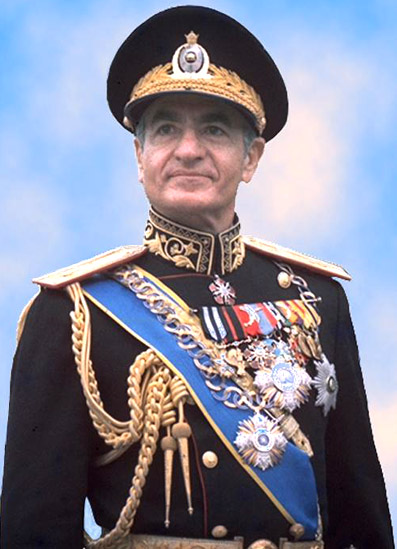

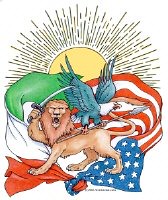
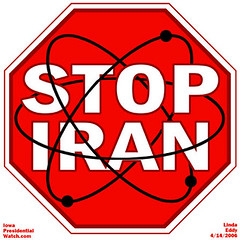

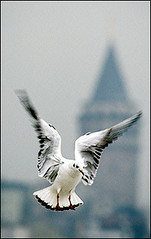



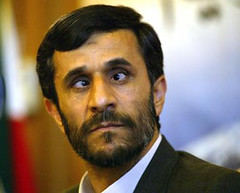

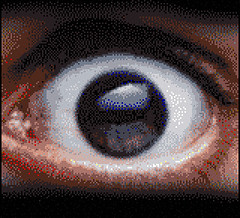

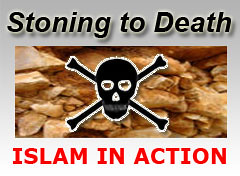

4 comments:
Thank you it was excellent ,Please encourage Iranians to read The brilliant book by Mike Evans " Jimmy Carter the Liberal Left and World Chaos" as it has the Whole story.
Thank you.
Warum Anti - Mullah ?
Ich respektiere die arabische Kultur - nur den Koran kann ich nicht respektieren, denn er behauptet
die wahre Religion aller Religionen zu sein.
2. - die Scharia verstümmelt Menschen und ist ein
satanisches Gesetz, denn nur einen satanischer Gott kann zulassen , solche Strafen.
3. - die Frau wird in eine Burka gezwungen, was nicht mit dem Koran übereinstimmt.
4.- jede Kritik am Koran ist eine Todesstrafe
5. - konvertieren ist auch eine Todesstrafe
Ja - ich zweifle an den Menschenrechten des Islam !!!- der keine Reform zulässt und die Menschen weiterhin im mittelalterlichen Dasein unterdrückt.
Sicher Europa hat eine marode Moral - ....einmal in Arabien die Gebete eines Muzins von 100 Minaretten gleichzeitig gehört zu haben, ist unglaublich ergreifen, welche Glaubenskraft da vom Volk ausgeht der Araber : war für mich sehr beeindruckend - wo erlebt man so was in Europa ?
Der Araber hat Respekt vor Gott -und das ist seine Stärke vor den Europäern - die so gut wie keinen Gott mehr wissen.
Des Arabers Herz ist Gott verbunden - wird aber
von einem grausamen Gesetz regiert.
Gruss
Myste
Warum Anti Mullah ?
Anti Mullah heisst : 1. - Verkrüppelung der Menschen durch die Scharia
2. - Zwangsverschleierung der Frau, die nicht mit dem Koran übereinstimmt
3.- die Behauptung der Islam sei die Wahre Religion aller Religionen, stimmt auch nicht mit dem Koran überein.
Doch beeindruckt hat mich in Arabien - die Gebete zu Gott von 100 Minaretten - wo ist der Glaube in Europa noch zu erleben ?
Ich fordere mehr Freiheit für Arabien !
1.- freie Wahl der Religion- und keine Todesstrafe bei konvertieren zu einer anderen Religion
2. - abschaffen der Scharia, denn sie ist mittelalterlich und entspricht nicht den arabischen Menschenrechten
3.- ein Willen mit anderen Religionen in ein Bündnis zu treten, denn es gibt nur einen Gott, der auf arabisch ALLAH heisst.
4.- eine Anerkennung jeder Religion, so diese den Menschenrechten aller Völker entspricht.
5. - Zwangsverschleierung abschaffen, denn es steht nicht im Koran, dass Frauen sich verschleiern
sollen.
Wir Christen sind mit allen Gläubigen des Islam verbunden, denn wir glauben alle an einen Gott.
Die Frage war Christus der Sohn Gottes, ist eine theologische Frage und muss die Zeit beantworten.
Doch im Vordergrund steht die ethische Forderung
unseres Glaubens und die ist die Gleiche des Islam.
Handele gut und will das Gute für Deinen Mitmenschen.
So keiner eine Todesstrafe bekommen nur weil er zum Christentum konvertiert - Gott fordert keine Todesstrafen, sondern nur eins " Liebe " !
Post a Comment